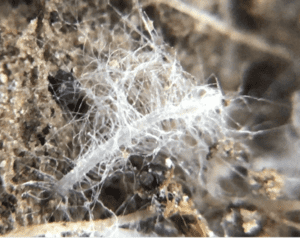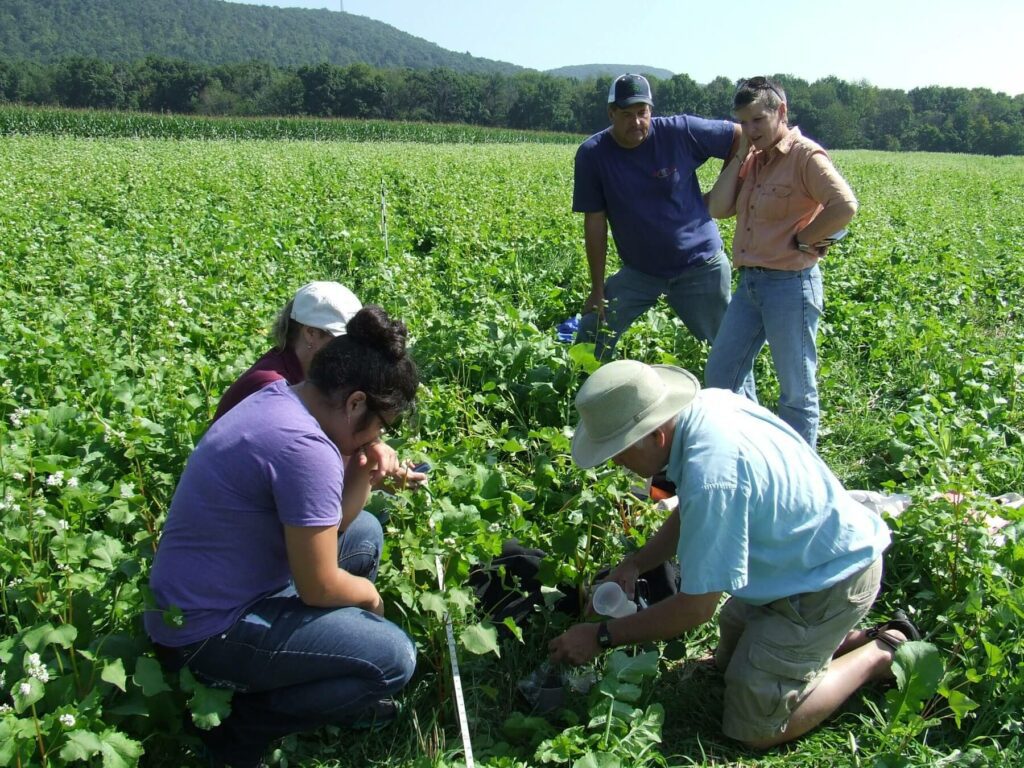It comes as a surprise to many to learn that plants and microbes constitute 99% of the biomass of life on earth. Things we can readily observe, like people, animals, birds, reptiles, insects, and fish, make up the remaining 1%.
Collectively and cooperatively, plants and their associated microbes underpin the functioning of all major ecosystems, including soils. Improving our understanding of these interactions is key to restoring the productivity and resilience of agricultural land, enhancing the quality of the food and fiber produced, reducing the need for inputs, increasing farm profit, and supporting human health and wellbeing.

Root hairs and the fungal network of a corn root that will feed the microbes in the surrounding rhizosphere.
Although the biomass and power of microbes is immense, like all other life forms they require an energy source. For most microbes of agricultural significance, this energy comes from the sun. The liquid carbon pathway requiring the presence of green, actively photosynthesizing plants is the principle means by which light energy is transformed to biochemical energy and transported to the soil ecosystem. Within soil, some of the liquid carbon is distributed via common mycelial networks, linking plant roots with distant microbial communities while the remainder supports trillions of microbes in the rhizosphere. Some intriguing symbiotic relationships take place here, including microbivory, or rhizophagy, in which microbes are attracted to and engulfed by actively growing root tips. After being stripped of their nutrient loads, microbes exit via root hairs to start the cycle again.
Some forms of microbes are also able to freely alternate between a soil phase and an endophytic (inside the plant) phase. These beneficial microbes can assist with the transfer and assimilation of nutrients, confer pest and disease resistance, and improve tolerance to abiotic stresses such as frost, drought, and salinity. The movement of microbes from the soil into plant roots (and from there into stems, leaves, flowers, and seeds) is termed biological induction.
Common mycorrhizal networks, microbivory, and biological induction are but a few of the extraordinary symbiotic relationships that exist between plants and microbes. Many more are yet to be discovered. The question then becomes, “How do we increase the number and biomass of the beneficial microbes that are able to assist the growth of plants?” The answer is- more plants! Or more correctly, a greater diversity of plants, growing together in communities.
We need to be mindful that in the not-too-distant past, the world’s prairies, grasslands, savannas, and meadows were extremely diverse, with 300 to 500 plant species thriving together in mixed communities. At least 60% of the species were forbs. Plant diversity increases microbial diversity, assisting the sequestration of soil carbon, which in turn improves soil health, enhances the availability of nitrogen and phosphorus, improves soil water-holding capacity and water-use efficiency, and enhances plant productivity. These beneficial effects are additive and every kind of plant counts- the more different types of plants you put together, the better it gets.

Jim Harbach (top), Schrack Farms, Loganton, PA, watches as Peter Donovan performs a water infiltration test in a multi-species cover including buckwheat, sunflowers, sorghum, forage collards, non-GMO soybeans, Persian clover, radish, canola, and subterranean clover. Infiltration rates are very high due to the diverse cover mix.
Fortunately, it is not necessary to restore several hundred species of plants to agricultural land to achieve soil health benefits. Relatively simple cover crop mixes can go a long way toward improving soil function, provided there is a diversity of plant functional groups. It is beneficial is diverse cover crop and forage crop plantings can be accompanied by a biostimulant, preferably on the seed, but at the very least in the furrow or as a foliar applied at or soon after emergence. High analysis fertilizers disrupt the plant-soil microbiome and should not be placed on, under, or near seeds- or indeed, in contact with the soil. Other harsh chemicals, such as herbicides, insecticides, and fungicides also disrupt the intricate relationships that exist between plants and microbes.
Remember, the soil is a living thing. Our quality of life depends on how well it functions.
This article first appeared in the 9th Edition of Green Cover's Soil Health Resource Guide.
Also check out the 10th edition, our latest Soil Health Resource Guide, over 90 pages packed with scientific articles and fascinating stories from soil health experts, researchers, farmers, innovators, and more! All as our complimentary gift to you, a fellow soil health enthusiast!
